Let's talk about bruxism (teeth grinding): A silent enemy
Now that I managed to get your attention with the name of the post, let's talk a little more about this. I have left aside my specialty area and I have been posting many photographs, now by mere chance I was struck by the little knowledge of this condition in people.
First of all we will clarify that it’s not a type of "terminal illness", but it’s something to take care of, because it’s more common than we think and its long-term repercussions are serious. Bruxism is defined as "dental grinding", when unconsciously a person "squeezes" or "grinds" their teeth. The importance of knowing the definition is that being an unconscious act, worth the redundancy, we silently develop this temporal-mandibular disorder, which will bring serious consequences as time goes by.
Already knowing in general terms what bruxism is, we must talk about what are the signs and symptoms of our silent enemy, so that we can detect it.
Main signs and symptoms
- Wear or fractures in the teeth of both jaws
- Headache on awakening
-Contraction sensation or fatigue of the muscles of the jaw
- Sounds in the joint when opening the mouth (it's a kind of click or click that we can perceive if we place our fingers in front of the tragus of the ear)
Here we can observe what is known as dental wear

The dotted line represents the structure of the tooth that has been worn by this habit
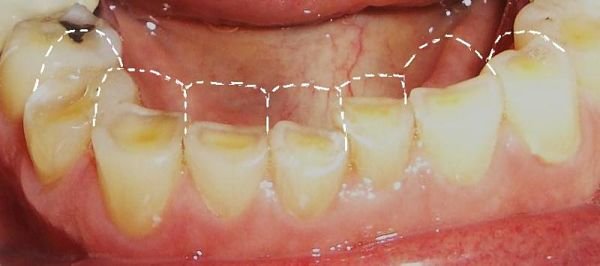
In the following image are represented the areas in which muscle pain or discomfort commonly occurs due to this disorder.
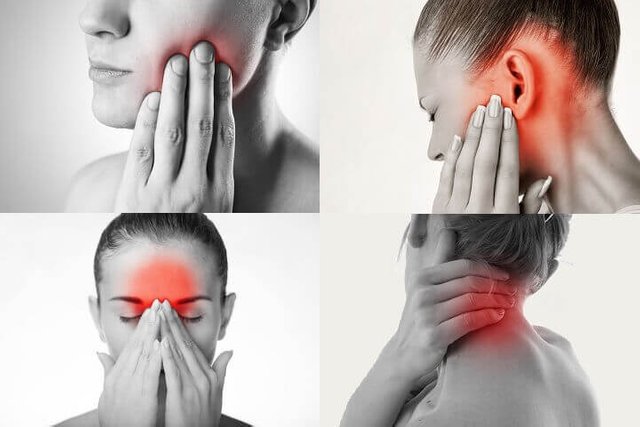
As we discussed earlier, bruxism is an unconscious habit; reason why we won’t know that we suffer it until someone else tells us that he hears our teeth grinding while we sleep. It can also be discovered in a visit to the dentist, so we always recommend at least two visits per year.
What are the most common causes of bruxism?
Bruxism is most commonly developed during sleep, the causes that influence the presence or absence of pain, it varies according to each person, however, the most common causes are usually:
- Stress, mainly
- Malocclusions or misaligned teeth
- Parafunctional habits: either the nibbling of nails or objects or the excessive eating of chewing gum.
- Poor posture is considered a relatively related cause, since dental tightening is considered a way to compensate the posture
What can happen if I do not treat bruxism?
- Problems in the temporomandibular joint (TMJ)
-Inflammation of the muscles located in the face
-Premature wear of the teeth - Dental fractures (large or small)
- Loss of tooth enamel (the first layer of the tooth)
-Constant headache and ears -Excessive sensitivity in the teeth
-Increase in the size of the muscles of mastication
Here we observe severe dental wear and dental fractures of the edges produced by the constant development of our silent enemy:
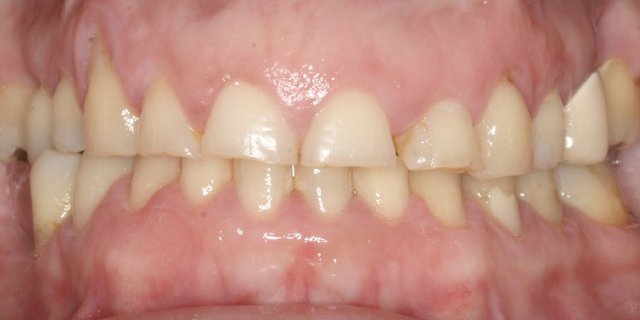
Now, what at this point you may be wondering...
How is bruxism treated?
The treatment will depend on what is causing the disorder. By asking a series of questions and using a routine exam, your dentist will determine the potential cause. Since the most common cause is stress, your dentist will recommend relaxation exercises or any activity that will help you relax, on many occasions dentists recommend visits to therapists or psychologists, it’s not a reason to feel offended, we just want to help you manage your stress level.
On the other hand, it is recommended to use a dental guard, which is adjusted exactly to the conditions present in your mouth, this is placed on the teeth (most commonly in the upper ones), protecting them so that they do not grind against your inferior teeth. Although, the splints help to cope with bruxism and to avoid the continuous dental wear, they aren’t a definitive treatment for it, since determining the main cause and controlling it is the main treatment.
Clinical example of dental guards and its use.
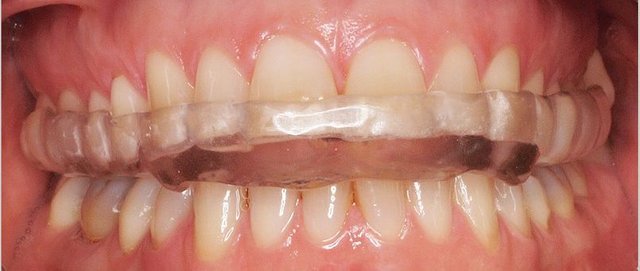
As a summary:
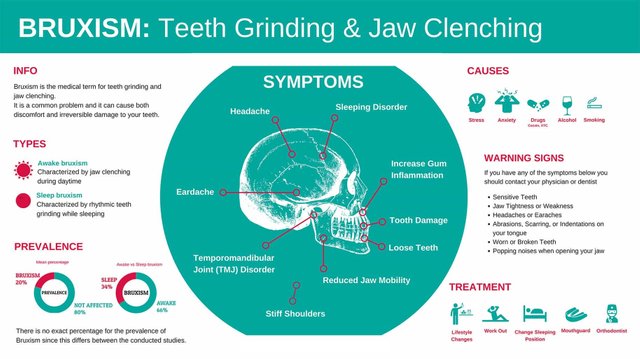
If you want to know a little more about this type of disorder, leave the link to a scientific article easy to read and interpret: [Article that will help you to know more].
The images have been obtained through the Google search, they don't belong to me. Here [Source 1, source 2, source 3], you can find some of the articles cited, which support what I explain here.
This post was written in simple words, for the good listener, with all the love and concern of a dentist who wants to educate a little more people. It is never too old to learn something new, especially when it is useful.
Finally, if you have any questions, do not hesitate to ask me!
"If you do not live to serve, you do not serve to live." - Mother Teresa of Calcutta.
Una información muy interesante Vanessa.
Gracias por compartirla.
Un abrazo! :)
Para eso estamos n.n
Información bastante interesante :D Gracias